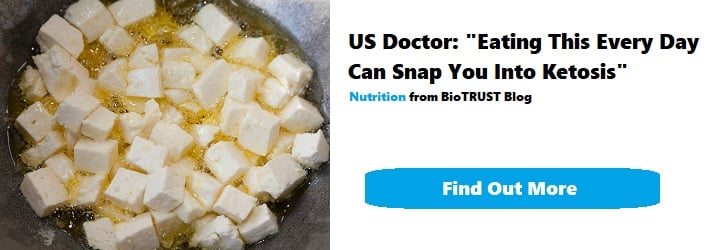How to Start a Keto Diet? (Complete Keto for Beginners Guide)

All aboard the keto train! It seems like everyone is giving keto a run for its money. After all, keto is touted as a powerful tool for easy weight loss, crushing cravings, boundless energy, cognitive clarity, and much, much more. How do you get started on keto? Should you get started on keto? What do you need to know? What should your macros be? How do you know when you’re in ketosis? What’s the difference between keto and low carb, and why does it matter? Can you have a cheat day on keto? Find the answers to all these questions and much more!
In today’s keto beginner guide, we will go over:
- Is the Keto Diet Right For You?
- What Should My Macros Be on Keto?
- How Many Calories Can I Eat on Keto?
- What the Keto Diet Does to My Body?
- Low Carb vs Keto: What’s the Difference?
- Is Cheating Allowed on Keto?
Is the Keto Diet Right For You?
Just because virtually everyone under the sun is talking about keto doesn’t make it right for everyone.
For example, some people have a genetic variant (e.g., APOE4) that doesn’t jive particularly well with a high-fat diet (especially one high in saturated fats). Additionally, some people have gallbladder issues and/or insufficient lipase production that limit their ability to easily digest fats.
Others simply feel and perform dismally on a very-low-carbohydrate diet (yes, even despite doing everything “right” on a keto diet).
Further, while humans are equipped with the machinery to “flip the metabolic switch” and run on ketones (as opposed to sugar), I’m not so sure we’re meant to be in a ketogenic state at all times. Rather, I think intermittent ketosis makes more sense, both practically speaking and from the perspective of many of our hunter-gatherer ancestors (who ate based on availability).
In simple terms, you have to choose a diet that’s specific to you, and emerging research suggests a personalized approach to nutrition takes into account an individual’s gut microbiome, anthropometric variables, physical activity levels, and other variables. 1, 2
With all that being said, if you are ready to jump on the keto bandwagon, let’s talk about how to get started.
Keto Macros: What Should Macros Be on Keto?
By definition, keto is a high-fat, very-low-carbohydrate diet. That leads us to the number one rule of joining the Keto Club: Limit carbs to 30 grams or fewer per day. Write that down on the back of your hand (or your forehead) with a Sharpie®. Put it up on Post-it® Notes on every refrigerator and pantry door. If you nail that consistently, you’ll be most of the way there.
(Yes, there’s some wiggle room and gray area with this rule, especially with folks who are very physically active, people who are “jacked” with more-than-average muscle mass, and those tricky “net carbs.” But for now, particularly if you’re just getting started, stick to THE rule.)
To fill in the blanks for your macros more clearly, keto diets are traditionally:
- Very high in fat (~70 – 80% of calories)
- Very low in carbohydrate (~5% of calories or ≤ 30 grams per day)
- Adequate in protein (~ 15 – 20% of calories)
What does that translate to? Here’s what the ketogenic macros would look like on a traditional 2,000-calorie diet:
- FAT (75% of calories): 2,000 * 0.75 = 1,500 calories from FAT. Since there are 9 calories per gram, this means about 165 grams of FAT per day.
- CARBS (5% of calories): 2,000 * 0.05 = 100 calories from CARBS. Sincere there are 4 calories per gram, this means about 25 grams of CARBS per day. [Just keep CARBS < 30 grams per day.]
- PROTEIN (20% of calories): 2,000 * 0.20 = 400 calories from PROTEIN. Since there are 4 calories per gram, this means about 100 grams of PROTEIN per day.
How Many Calories Can I Eat on the Keto Diet?
Now, that brings us to the all-important question: How do I figure out how many calories I should be eating? Ideally, you’d have some baseline established. In other words, you’d already have a good idea of how many calories you can consume to maintain your weight.
If you’ve been weight-stable (neither gaining nor losing weight), then you can track your caloric intake for a couple of weeks to gather this data. While this is probably the most accurate method, it does require measuring and weighing your food, which is not usually well-received.
On the other hand, you can use an equation/calculator designed to estimate daily caloric needs, but keep in mind that these are not without error. For starters, there’s a wide variety of them, and generally speaking, the simpler they are, the greater the margin of error.
Personally, when using a calculator, I prefer one that takes into account fat-free mass, activity levels, exercise activity, height, weight, age, and gender.
There are several different equations that can be used to estimate resting metabolic rate (RMR) and daily energy expenditure, including:
- Harris-Benedict
- Mifflin-St. Jeor
- Katch-McArdle
- Cunningham
Keep in mind that these are meant to be used to estimate RMR, which is only one component of total daily caloric expenditure (albeit the largest, making up 60 – 75% or more). To approximate total daily caloric needs, you’d multiply the estimated RMR by the appropriate activity factor, as follows:
- Sedentary — desk job and little to no exercise (multiply by 1.2)
- Lightly Active — light exercise/sports 1 – 3 days/week (multiply by 1.375)
- Moderately Active — moderate exercise/sports 3 – 5 days/week (multiply by 1.55)
- Very Active — hard exercise/sports 6 – 7 days/week (multiply by 1.725)
- Extremely Active — hard daily exercise/sports and physical job or training (multiply by 1.9)
As an aside, the thermic effect of feeding, or TEF (one of the components of daily energy expenditure), is arguably a little bit lower on a ketogenic diet. For example, fat (the most prevalent macronutrient on a keto diet) has the lowest thermogenic cost among the three macronutrients. Additionally, protein (the most thermogenic macronutrient) tends to be a bit lower with keto. Be that as it may, this is likely not worth the potential paralysis by analysis considering that TEF typically only makes up about 10% of the total calories burned each day. But I digress…
Arguably the most robust and comprehensive online tool to estimate caloric intake is the NIH’s Body Weight Planner, which allows you to set your goal weight, when you’d like to achieve it, and how much you plan to increase your activity level to do so. This is an excellent tool, as it provides calorie estimates for weight maintenance and weight-management goals.
Keep in mind that there are many factors that go into determining the “best” caloric intake, such as your goal, body composition, weight history, physical activity, exercise, and more. Even the most reliable and scientifically-validated methods have a margin of error. In other words, these are not bullseye recommendations. They’re simply meant to get you in the ballpark.
At the end of the day, week, and month, just ask yourself a simple question: “How’s that working for you? Especially early on, you’ll need to be diligent about tracking your intake, assessing dependent variables (e.g., subjective and objective outcomes), and making adjustments accordingly. For example, if your goal is to lose weight, and the scale’s not budging (or it’s going up) after a few weeks, then it may be time to dial it back (although there could be other variables at play).
One final word on caloric intake. I suspect most people are interested in keto for weight loss. Along those lines, while daily caloric restriction is most common for weight loss, all that matters is that, on average, you’re eating fewer calories than you burn.
If you’d rather eat a little more some days and a little less on others, that’s fine and usually equally effective. In fact, some take this to a bit more of an extreme through some sort of intermittent fasting. For example, you might eat 25% of your daily target one day and 125% the next. Research has shown that this pattern of eating—called alternate-day fasting—is just as effective for weight loss and improving health as daily calorie restriction. 3
And if weight loss is your thing, then I think it’s always best to start at the highest caloric intake you possibly can—instead of drastically cutting calories right out of the gate. You can always chisel away calories, but once you cut them, it’s typically much tougher to add them back without stalling progress.
Practically speaking, let’s say, you’re a 6-foot, 200-pound, 40-year-old male who’s moderately active and is looking to drop weight. Your typical day with keto macros look like this:
- 2,118 calories
- 165 g of fat
- 132 g of protein
- 26 g of carbs
Meanwhile, if you’re a 5-foot, 6-inch, 160-pound, 50-year-old female who’s lightly active and wants to lose weight, your keto diet macros look more like this:
- 1,373 calories
- 107 g of fat
- 86 g of protein
- 17 g of carbs
What Keto Diet Does to Your Body?
While my fellow analytical minds might find all the number crunching intriguing, I know most people care more about one thing: What does all that mathematical mumbo jumbo add up to? What does the keto diet does to your body?
In other words, what are the benefits of adhering to a ketogenic diet and being in ketosis? How the heck do you know if you’re in ketosis? Does it even matter if you’re in ketosis?
Nutritional ketosis is a powerful metabolic state during which the body is burning primarily fat (ketones are derived from fats). It’s becoming increasingly apparent that elevated ketones have an array of important signaling functions (e.g., regulating inflammation and gene expression), and the metabolic shift to increased ketone use may be the secret behind a majority of the benefits of the ketogenic diet. 4,5
Ketones, which are often called the “brain’s preferred source of fuel,” appear to support brain health and enhance cognitive function. 6 In fact, most keto disciples rave about the cognitive clarity, energy, and upshift in brain processing speed they enjoy while being in a deep state of ketosis. What’s more, ketones are thought to have a direct effect on appetite regulation. 7
And while some claims are anecdotal, some have only been scientifically demonstrated in animals, and some are downright outrageous, a well-formulated ketogenic diet can support a long list of health benefits including: 8
- Weight management
- Appetite management
- Metabolic health and glycemic control
- Cognitive function and brain health
- Heart health
- Healthy aging
- Improved markers of inflammation and oxidative stress
There are a few different ways you can test whether or not you’re in ketosis. For the record, nutritional ketosis is defined as ketone levels ≥ 0.5 mmol/L. If you’re just experimenting with the ketogenic diet for the first time or you’re “a numbers kinda guy or gal,” these can be useful.
The most popular methods include:
- Urine strips
- Blood Ketone Meters
- Breath Ketone Analysis
Each of these tools is basically assessing your state of ketosis by testing for ketones in your pee, blood, and breath, respectively. Under normal non-ketogenic circumstances, ketone levels are typically quite low (< 0.3mmol/L). As mentioned above, you’ve hit “nutritional ketosis” when your ketone levels are between 0.5 – 8 mmol/L, and most people say the “optimal” range is between 1 – 3 mmol/L. What’s really important is finding what’s optimal for YOU. That can vary from person to person, and it can take time to figure that out. When you’ve established a ketogenic state, you’re likely to feel what many describe as a “euphoric” state of increased energy, mental clarity, and increased cognitive performance. While numbers are cool—and important at times—it’s really about finding your “keto zone.” In other words, while measuring ketones can be an incredibly valuable exercise, especially when first dipping your toes in the keto waters, you have to be careful not to be myopic. In other words, elevated ketones are just one desired byproduct of a ketogenic diet. Said differently, don’t go chasing ketones (especially after establishing a baseline); chase results!
Low Carb vs Keto: What’s the Difference?
Simply put, all ketogenic diets are, by nature, low-carb diets. However, not all low-carb diets are keto. You see, while keto is very well defined by its carbohydrate constraints (i.e., < 30 grams of carbs per day), when it comes to low-carb diets, the lines are about as clear as mud (even among the scientific community). For example, some consider anything less than 40% of calories from carbohydrates as low-carb diets. 9 Still others have set the low-carb bar as high as 45% of calories. 10 Let’s be honest: That’s not low-carb. At best, it’s moderate-carb. My opinion aside, you can see how this could raise some eyebrows, but there’s more to add to the confusion.
On the other hand, some have set the cutoff definition for a low-carb diet at 26% of calories, or less than 130 grams of carbohydrate per day. 11 While that line is a bit more reasonable, that’s still 4 – 5 times what’s considered standard for keto.
In other words, there’s very little consensus when it comes to answering the question, “What is low carb anyway?” And there are still other noteworthy differences between keto and low-carb diets.
For instance, a true ketogenic diet usually provides only an adequate amount of protein. On the other hand, low-carb diets are almost exclusively higher in protein. What’s more, while a hallmark of keto is its relatively high concentration of fat, low-carb diets tend to be more moderate when it comes to fats.
Practically speaking, while the physiological aim of a ketogenic diet is to achieve nutritional ketosis, it’s absolutely possible to be on a low-carb diet and not be in ketosis. In fact, without counting carbs, fats, or proteins, that’s arguably the defining characteristic between keto and low carb: Are you in (nutritional ketosis), or are you out?
Is Cheating Allowed on Keto?
Humans love boundaries. And along those very lines, we love to test boundaries. Like I said from the beginning, when it comes to keto, THE line is abundantly clear: Restrict carbs to 30 grams or fewer per day, and you’re golden.
But that’s not enough for most of us. We want to know how much we can get away with. Can we count net carbs instead of total carbs? Do we even have to track anything at all or can we just take the lazy keto approach?
And of course, the most common boundary-bumping questions: Can I cheat on keto?
The short answer is, yes, you can have a cheat meal or cheat day, and it won’t cancel out the benefits, completely derail you, or ruin all your hard work. But there’s more to the story, and I’ll start by referring to my good friend and keto expert Shawn Wells, who responded with the following when asked this very question:
“Yeah, you’ve got to live your life. If you’re just looking at it as a diet so you can do some crash thing over 12 weeks, you’re going to just drop some weight and it’s not a lifestyle, then maybe don’t have your ‘cheat day,’ but I wouldn’t recommend that. I would recommend that keto be your lifestyle—it’s not just the keto diet.
A lot of people say the keto diet is too difficult to maintain as a lifestyle. I want some carbs here and there. Well then, plan your carbs and have your carbs and enjoy it. And that’s not an issue to have your carbs here and there.”
Moral of the story: If you’re keto and just want to be able to have an occasional meal/treat/refeed with carbs, there’s no problem with cheating on keto. In fact, it’s likely that strategy can help improve compliance, results, and performance. Generally speaking, I think it’s a good idea to wait until you’ve established your baseline (i.e., adapted to keto).
In other words, I recommend committing to a strict keto diet for 60 – 90 days first, then allowing yourself the flexibility to schedule a carbohydrate refeed. And no, I’m not particularly fond of the “cheat” terminology and prefer things like “free meal,” “diet break,” or “refeed.” Although it may seem like a matter of semantics, choosing the right terminology can be a useful reframing tool, help keep your mind right, and help get you back on track faster.
Speaking of which, Shawn and I have talked about several strategies to get back into ketosis faster after a cheat day, including:
- Fasting
- Exercise
- Using BioTrust’s IC-5
- Using MCTs, particularly BioTrust’s Keto Elevate
- Making the first meal a high-fat meal (e.g., fat bomb)
Want More Keto Advice?
If you need more to satisfy your appetite for keto, worry not, my friend, we’ve got you covered with tons of resources to help ensure your success. Here’s a handful if you’re ready to take the next steps:








